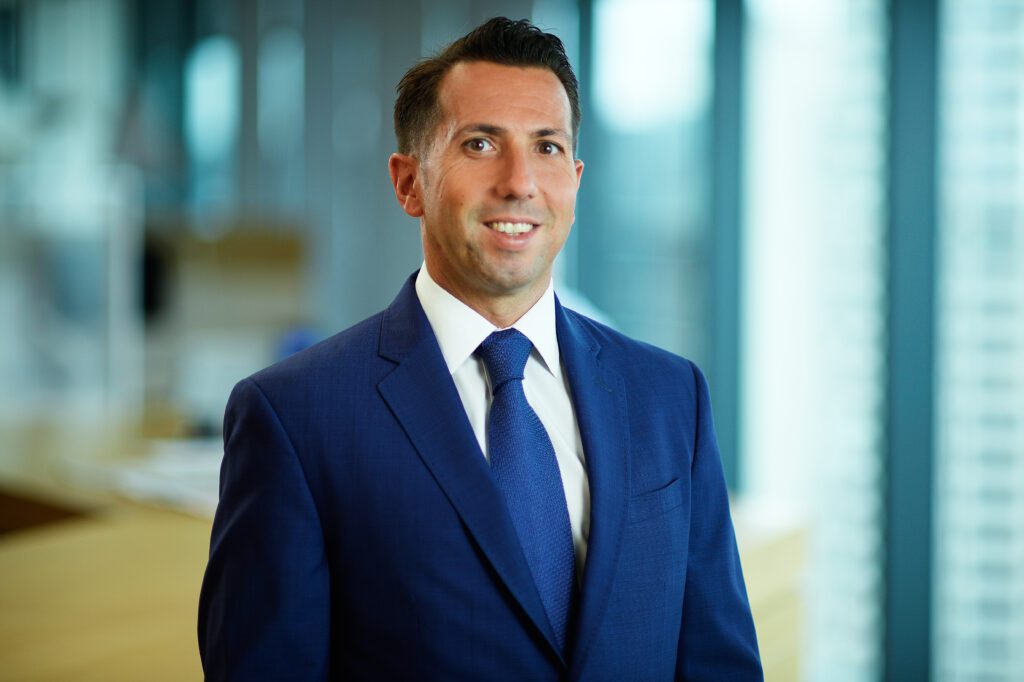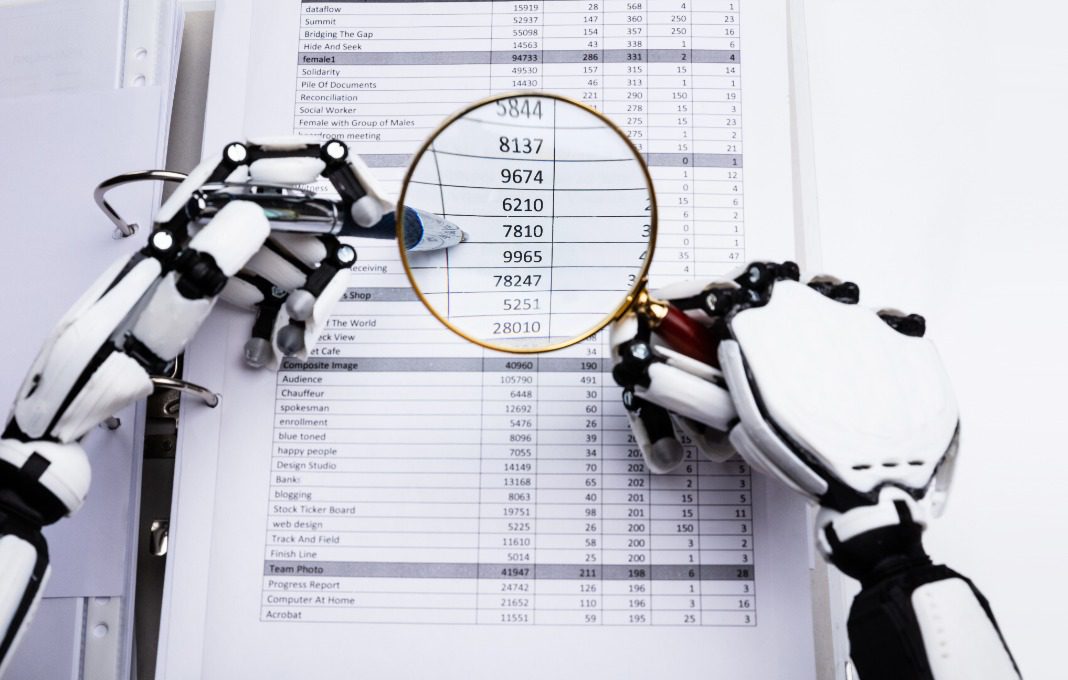At the North American division of the large global insurance company QBE, CFO Christopher Castaldo has kept a close watch over the automation of operational and financial reporting processes. Early accounting and finance automation projects involved traditional journal entry, order-to-cash, procure-to-pay and record-to-report processes, with the goal of timely and accurate reporting always in mind.

In streamlining the record-to-report process, Castaldo implemented a platform that enables more automated workflows. He also introduced more than a dozen bots for classic journal entry processes, “from source-to-ledger, saving countless hours and even days in a few instances, which allows us to pivot our capacity to meet the demands of stakeholders and regulators,” he said.
In hindsight, these projects now appear to be table stakes. “By and large, the finance function in the insurance industry historically has underinvested in technology, as have other functions, but we’ve caught up to the need to embrace change,” said Castaldo.
He pointed to current plans to standardize and automate accounting and finance processes on an end-to-end basis to generate insightful data and, in turn, expand the decision support the function provides the rest of the enterprise. “Given the efficiencies that automation provides, we have the remarkable opportunity to strengthen the business acumen of people within the finance function to improve decision support to our P&L leaders,” said Castaldo, who previously led FP&A at QBE Group before assuming the North American CFO position in 2020.
“By streamlining the financial accounting and monthly close, we can shift the type of work our finance professionals perform, with a focus more on delivering insightful data to our business leaders in real time,” he said. “That’s powerful and it’s where we’re headed.”
Beyond that, the sky’s the limit. As the finance function becomes increasingly “process resilient,” Castaldo envisions a day where machine learning, bots and generative AI tools like ChatGPT combine in some fashion, giving CFOs and other business leaders the opportunity to query a chatbot in real time with questions that help augment specific decisions. “Really anything is possible, but before we all jump to the flashy outputs, we need to lay the foundation for a single source of truth, richer data sets and more modernized systems,” he said.
Castaldo is not alone in projecting extraordinary changes in the role that finance technology will play in supporting the decisions of leaders across the business. “We are at a pivotal moment to transform finance,” said Sanjay Sehgal, partner and head of advisory markets at Big Four audit and advisory firm KPMG. “Roughly 30 percent of accounting and finance processes are presently automated, yet 70 percent could be automated and someday the entirety will be automated.”
When this heralded state of automation arrives, all accounting and finance processes will be “knitted together on an end-to-end basis to achieve a touchless close,” Sehgal projected. “Behind the scenes, the continuous use of AI tools will provide anomaly detection, meaning the CFO will know well in advance any issues before they hit the close, which will be corrected in real time.”
Like Castaldo, he envisions a day when the CFO shifts from an aggregator of information into a decision advisor, engaging with other business leaders across the business to assist more informed and insightful decisions. At the same time, the CFO will run the enterprise like Captain Kirk guided the USS Enterprise.
Once manual reports go the way of the calculator and generative AI tools are embedded in accounting and finance processes, the “big vision” stuff will take hold, he said. “A CFO will be sitting in a car or on the train asking a chatbot for last month’s same-store sales and to predict where next quarter’s sales are headed and get a credible answer. That’s leap-frogging stuff and it is right around the corner.”
Like many curious people tending toward skepticism, Sehgal has given ChatGPT a try. “On a whim, I asked it what the future state of the finance organization led by the CFO will look like, and it pretty much nailed it,” he marveled.
Autonomous Automation
To reach this near-zenith state, basic blocking and tackling is required. Michael Polaha, senior vice president of finance and technology transformation at public company BlackLine, said before financial data can be “confidently turned into actionable data for decision support, CFOs need to reevaluate the financial processes they have in place to ensure continuous visibility over the data and safeguard the accuracy.”
Assuming these steps are taken, the coupling of automation with AI will usher in the age of the finance technology “unicorn,” in the sense that something highly desirable is now obtainable, he said. “Financial accounting `unicorns’ have the ability to connect technical accounting with technology design to enable the transformative shift to `autonomous accounting’—all of it automated and made compliant to GAAP,” said Polaha, who served in a similar capacity at Johnson & Johnson prior to joining BlackLine, a provider of automation solutions for finance and accounting, in 2021.

The Top 2 Barriers Keeping Finance Teams from Adopting Automation–And How to Overcome Them
CFOs see automating manual tasks as a top priority, but these projects are often hampered by their sweeping scale and complexity. Here’s how to overcome the hurdles and get started.

Autonomous accounting is the term used to describe the automation of accounting and finance processes to deliver real-time predictive insights to decision-makers, as opposed to the current dependence on people and spreadsheets. Since accounting is based upon a known set of rules, it’s not a stretch to automate transaction data in compliance with the rules. The challenge is whether or not the finance function’s underlying infrastructure captures events resulting in the recording of a transaction.
“Assuming events are automatically recorded, triggered by tools that identify their unique nature and related accounting consequences, autonomous accounting is possible,” Polaha asserted. “The recipients of the alerts identifying a particular transaction might require an extra set of human eyes to ensure their veracity, but that’s the vision and it will facilitate a vastly more streamlined close process. It’s a journey but I believe that’s where we will land, probably faster than we imagine.”
Once this new ecosystem is in place, the function of finance will evolve further, into what he called a “monitoring agent. …In past incarnations of the accounting and finance function, personnel were either technical or IT professionals; today, these skill sets are converging,” he explained. “Once we reach a state of autonomous accounting, and we will, the next generation of CFO leadership will be expected to have more of this hybrid persona.”
In advance of this transformation, BlackLine is already doing what Sehgal at KPMG projected. “We’re working on incorporating generative AI in our solutions; for example, we expect to provide risk assessment capabilities and needed corrective actions in our journal entry product, something that isn’t typically available in ERPs,” he said.
Leading the Way Forward
Some level of decision support is already provided by some finance functions. At QBE, Castaldo said the automation of many accounting and finance processes has paved the way for the finance team to help the rest of the organization capitalize on opportunities and better manage risks. A key partner in this journey is the insurer’s actuarial function, whose broad responsibilities include pricing, reserving, predictive modeling, and the provision of strategic advice on subjects like regulation, underwriting and risk management.
“The actuarial function is important when it comes to data, modeling and process automation,” he explained. “Like the FP&A team, the actuaries are embedded in the finance function and are wonderful partners in helping provide decision support across the business.”
Looking back, he said a lot of time has been put into building the foundation for data management, architecture and governance. “We think differently now about the information we provide the business, with the goal of putting better and richer information in the hands of the business, as quickly as possible,” he said. “Automation costs more but the bang for the buck is more resilient and sustainable processes, greatly strengthening risk management.”
Down the line, he foresees a day when so much of the accounting process has been automated that the function will reach a state of autonomous accounting. “This is the goal, and it is core to our data strategy,” said Castaldo, noting that QBE has made significant progress uniting numerous IT systems and data sources gained through acquisitions.
Other CFOs agree that the road to the future is a step-by-step journey, with occasional potholes along the way. At ImaginAB, CFO David Fractor had exciting plans to automate the pioneering biotech company’s accounts payable (AP) processes. The global company, which develops next-gen cancer-fighting technology, was stymied by multi-currency accounts payables. “We had one full-time finance manager dedicated just to paying invoices,” Fractor said.

When the pandemic surfaced, it brought Fractor’s plans to automate AP to a near halt. “The complexity of our invoicing was compounded by the pandemic-driven surge in activity (and) the challenges of making payments with an entirely remote and mobile workforce,” he said. “We were receiving invoices from our customers across the world (and) it was difficult for the fulltime finance manager to approve the invoices in lockstep with accounting.”
As an early stage biotech company dependent on income from large pharma and biotech customers, with a mission of transforming the clinical management of cancer, the slowdown in accounts payable was untenable. As the pandemic eased in the fourth quarter of 2020, Fractor implemented a cloud AP management solution. “It took about three months to hit its stride, but once it did, we calculate that it saved 1,750 manhours, the equivalent of almost a year’s fulltime work, reducing the need for additional headcount,” he said.
By implementing the automated invoice approval feature, the finance function easily handled invoices coming in from across the world, enabling payments in any currency while managing all the tax, FX and compliance challenges. “The automation of the invoicing processes also helped us accelerate the monthly close from weeks to hours,” he said.
Pleased with these results, the CFO is perusing a variety of automated solutions for accounts receivable, internal reporting and the close process. “I’m looking to automate as many back office functions as I can,” Fractor said.
Well ahead in this regard is Mike Small, CFO at OzNaturals, which sells natural skincare branded products on a business-to-consumer and business-to-business basis. Small said he has automated the “vast majority of heavy lifting transactions” in the accounting and finance function. “I learned about the value of automation at Reader’s Digest; I was in a division where hundreds of people were doing manual data entry, and once we automated these processes, the number went down to less than 20.”

Despite Small’s belief in the value of automation, he is less sure about the use of data analytics. “The finance function continues to execute data analytics on a manual basis, which I don’t see changing in the foreseeable future,” he said. “I’m a firm believer that the analytics is only as good as the person setting it up, and I just haven’t found the right person. The danger with AI is someone asks the right question, but the tool is populated with the wrong answer.’”
Like other CFOs whose function has benefited from automation, Castaldo said the move away from manual processes does not suggest people are being replaced with bots and AI. “We’re changing the profile of the finance professional of the future into a more tech-savvy, data-literate, decision-supportive analyst—less encumbered by the classic tower of accounting, reporting and FP&A and more focused on the front lines,” the CFO explained.
Best of all, by forging a modern accountant composed of diverse skill sets, today’s pronounced accountant shortage will soften. “We’re quite proud of exporting a lot of our finance professionals into different parts of the business, where they learn new things that sharpen their acumen,” said Castaldo. “Along with the new tools they’re using, the definition of the classic accountant is giving way to the modern accountant, which goes a long way toward attracting and retaining talent.”








